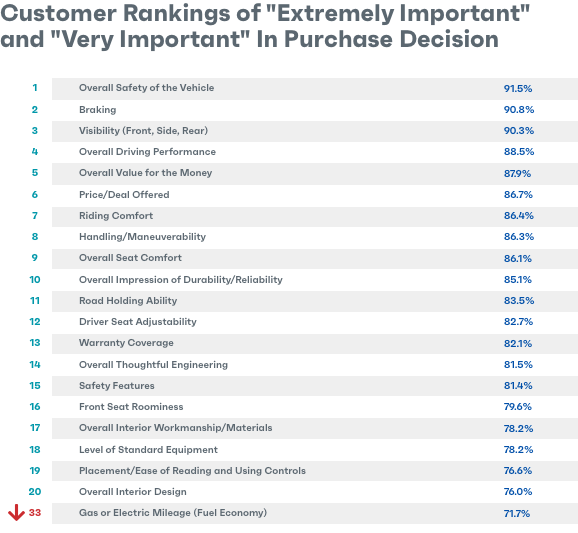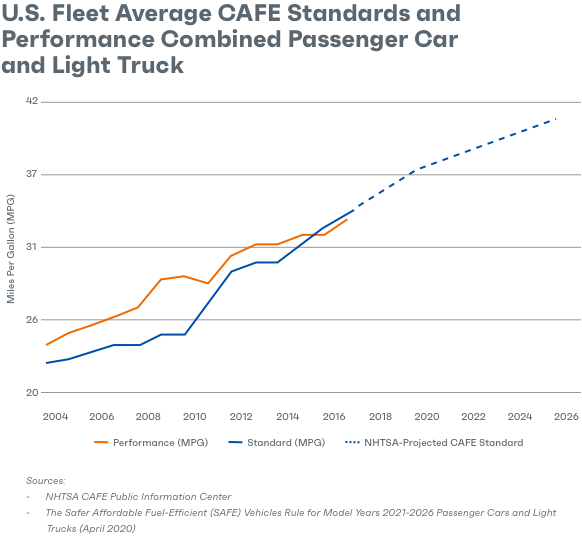FUEL ECONOMY
Vehicles sold today are on average 30% more fuel efficient than vehicles sold in 2005.
Automakers are committed to improving fuel economy and greenhouse gas (GHG) emissions, and automakers are planning to increase the number of electric vehicles in the coming years. Automakers invest heavily in new models of cars and light trucks, so they are eager to sell those vehicles in large volumes – especially when the government evaluates regulatory compliance based on those sales.
Consumer demand for the most energy-efficient vehicles remains lower than desired for many reasons. In 2024, the auto industry produced:
- More than 295 models of vehicles that achieve over 40 MPG (combined)
- More than 125 electric models, including plug-in hybrids (PHEV), battery electric (BEV) and fuel cell electric vehicles (FCEV).
- 93 gasoline-hybrid models.
By contrast, light truck sales (including SUVs, CUVs, Pickups, and vans) accounted for 80% of sales in 2023, and specifically, pickup truck sales were 18% of total sales.
Consumer Choices
Customers have multiple goals when car shopping.
Fuel economy/mileage ranks 33rd as a purchase rationale, according to Strategic Vision’s massive survey of new car buyers conducted after their purchases to gain deeper insight into what motivated their choices.
Many factors drive consumer buying decisions, including vehicle costs, the price of gas and business and family needs. Consumers overwhelmingly choose gas-powered engines over alternative powertrains. One reason is that all gas-powered engines have become more fuel-efficient.

Source: Strategic Vision New Vehicle Experience Study, May 2020
Fuel Economy & Greenhouse Gas Emissions
The federal government develops mileage standards called “Corporate Average Fuel Economy,” or CAFE, and sets separate requirements for greenhouse gas (GHG) emission standards. Once the government sets these requirements, automakers are evaluated based on the products consumers choose to buy.
The federal government recently updated fuel economy and GHG standards for 2021-2026, which require continued improvements in fuel economy and GHG emissions
While average fuel economy of all new vehicles continues to rise, sales of the most energy-efficient autos remain low. Sales of the most energy-efficient models will need to grow substantially to meet carbon reduction goals.
As automakers look to the future, electric vehicles will continue to play an increasing role, and additional government policies are needed to increase customer awareness and demand, build a robust charging and hydrogen refueling station network across the nation, and continue to balance fuel-efficient and advanced technologies with customer needs.

Gas Prices & Sales
Gas prices affect passenger vehicle sales.
When gas prices fall, consumer demand declines for high MPG vehicles and alternative powertrain vehicles, while increasing interest in light trucks like SUVs, vans and pickups. This is especially so given all classes of new vehicles are more fuel efficient.
![]()